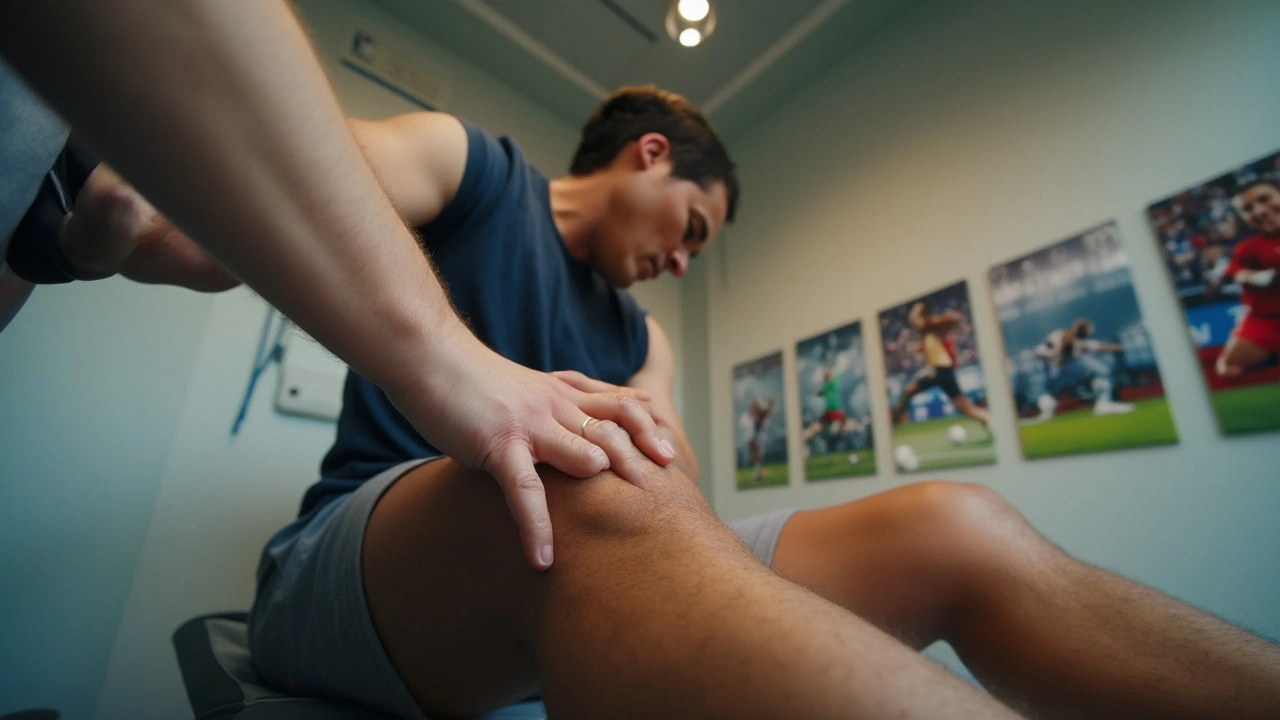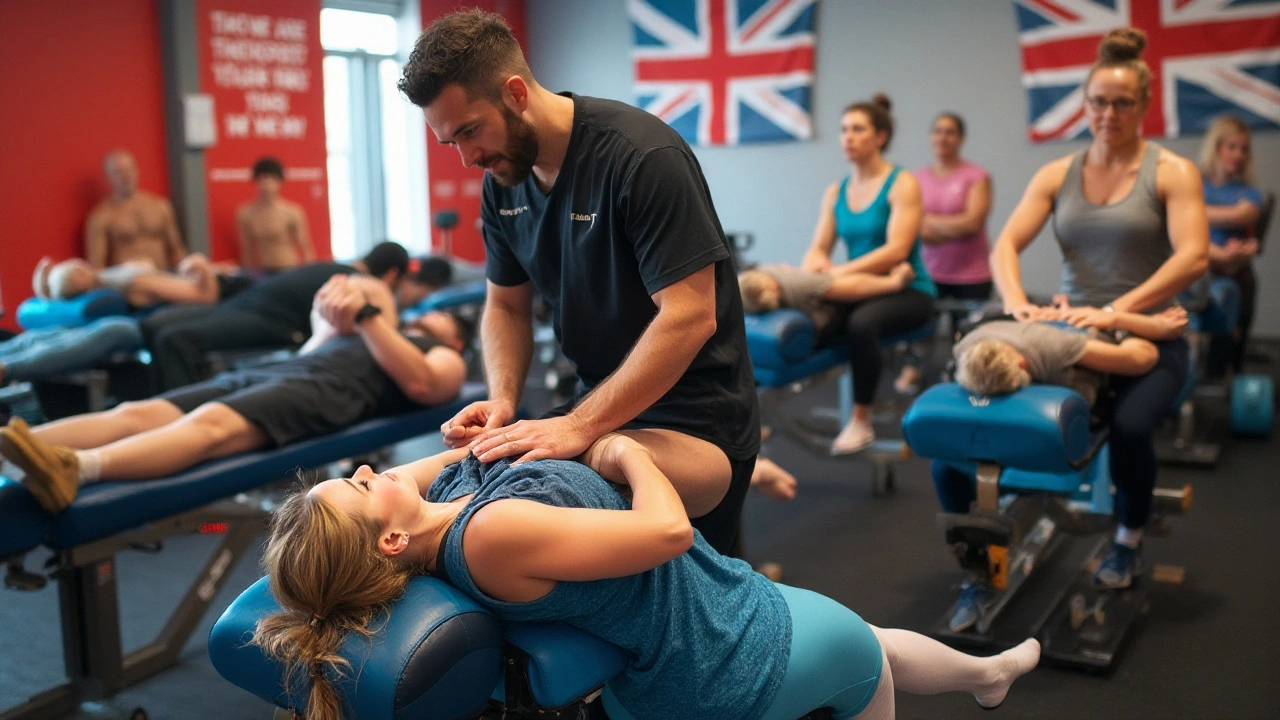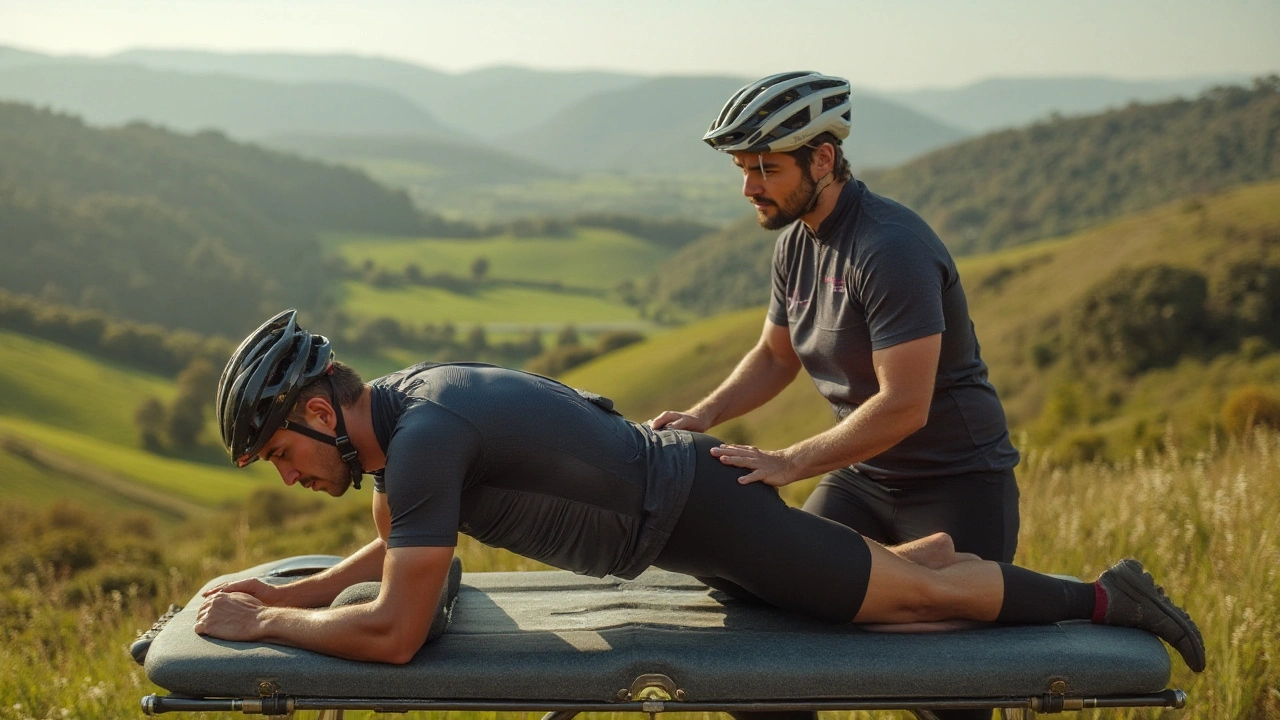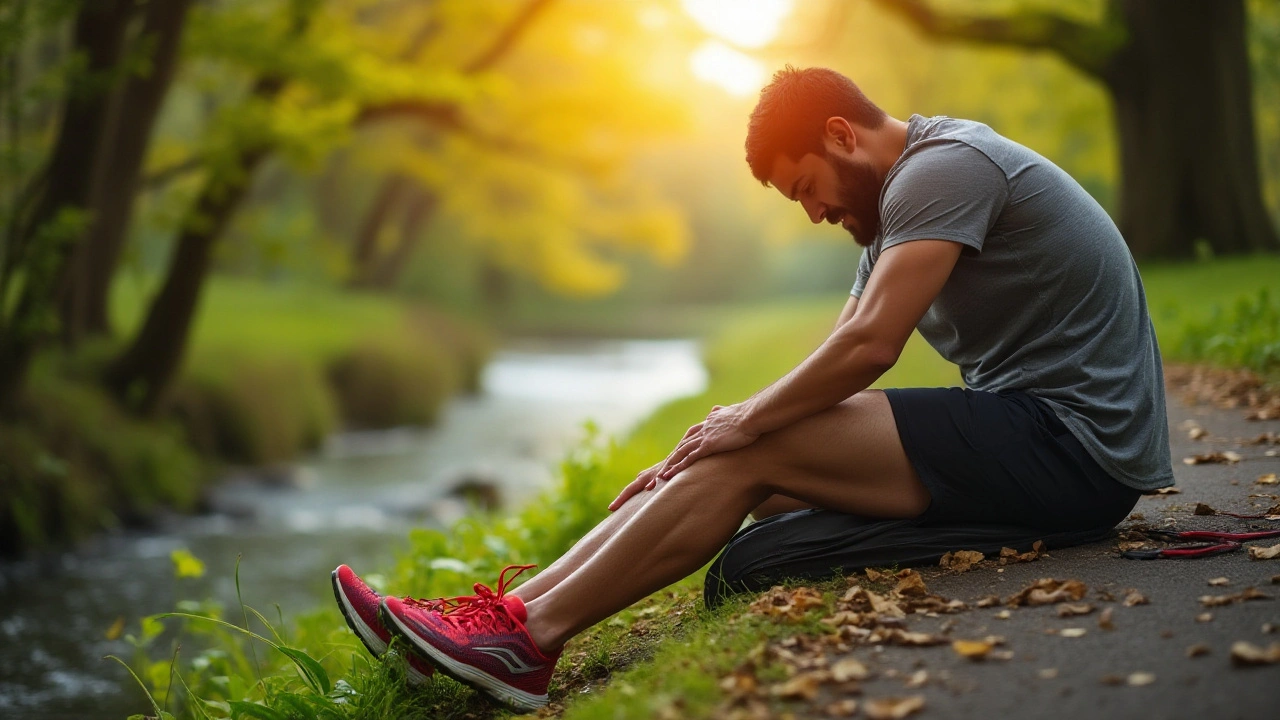Whether you're a weekend warrior or a professional athlete, massage therapy can be a game-changer for you. Sports massage isn't just a fancy way to relax; it's a strategic tool that can enhance your performance, prevent injuries, and speed up recovery.
Often overlooked, sports massage can be the secret weapon in your training arsenal. It addresses the imbalances caused by repetitive movements and intense training sessions, allowing your muscles to recover faster and work more efficiently.
So, how can you make the most out of sports massage? Let's dive into its myriad benefits and learn how to integrate it into your training program to get the most out of your workouts.
- The Role of Sports Massage in Athletic Performance
- Preventing Injuries Through Massage
- Speeding Up Muscle Recovery
- Incorporating Sports Massage into Your Routine
The Role of Sports Massage in Athletic Performance
Sports massage plays an essential role in enhancing athletic performance by targeting muscle groups that are heavily utilized during training and competition. By incorporating specific massage techniques, athletes can experience increased flexibility, reduced muscle tension, and improved blood flow. These factors are crucial for athletes who want to maintain peak physical condition and avoid injuries.
One of the significant benefits of sports massage is its ability to address muscle imbalances and tightness. During rigorous training, certain muscles become overworked and tense, which can lead to misalignment in the body. Through various massage techniques such as deep tissue and myofascial release, sports massage helps to realign the muscles, promoting better coordination and efficiency in movement.
Another critical aspect is the reduction of muscle soreness and fatigue. Intense training sessions often result in the accumulation of lactic acid and other metabolic waste products in the muscles. Sports massage enhances lymphatic drainage and increases the circulation of blood, which helps to remove these waste products more efficiently. As a result, athletes experience less muscle soreness and faster recovery times, allowing them to train harder and more frequently.
Research has shown that sports massage can also positively affect an athlete’s mental state. The physical benefits of decreased tension and pain can lead to improved mental clarity and reduced stress levels. A calm and focused mind is just as important as a conditioned body in achieving athletic success. According to a study published in the Journal of Sports Medicine and Physical Fitness, athletes who received regular sports massage reported higher levels of relaxation and reduced anxiety.
"Sports massage isn't just a luxury; it's a critical component of a comprehensive training program," says Dr. Sarah Holmes, a leading sports scientist. "It plays a pivotal role in improving both physical and mental aspects of an athlete's performance."
Increased flexibility is another significant benefit of sports massage. By stretching and manipulating the muscle fibers, massage can increase the range of motion in the joints. This is especially important for activities that require flexibility, such as gymnastics, swimming, and martial arts. Enhanced flexibility not only improves performance but also reduces the risk of strains and sprains.
Sports massage techniques also stimulate the production of endorphins, the body's natural painkillers, which contribute to pain relief and a sense of well-being. These neurotransmitters help athletes manage pain without relying on medication, enabling them to train and compete at their best.
Moreover, integrating regular sports massage into an athletic routine can enhance proprioception, which is the body's ability to sense movement and position. Improved proprioception helps athletes maintain balance and coordination, crucial for sports that require precision and agility like tennis and basketball.
Athletes who invest in regular sports massage often find it easier to maintain their training schedules and achieve their performance goals. By addressing muscle tension, promoting recovery, improving flexibility, and enhancing mental clarity, sports massage provides a comprehensive approach to optimizing athletic performance.
In summary, sports massage is far from a mere indulgence. It's a vital tool in an athlete's toolkit, offering a multitude of physical and mental benefits that contribute to peak performance. Whether you're aiming for a personal best in your next race or looking to outmaneuver opponents on the field, incorporating sports massage into your routine can give you the edge you need.

Preventing Injuries Through Massage
Athletes, regardless of their level, understand that injuries are an inevitable part of physical activities. However, regular sports massage can be an effective tool to minimize these risks. By incorporating scheduled massage sessions, you can mitigate the chances of developing both chronic and acute injuries.
One of the best ways massage helps is by enhancing muscle flexibility and joint mobility. Tight muscles and stiff joints are more prone to strains and sprains. Massage therapy works on soft tissues, stretching and relaxing them, which reduces the stress on your tendons and ligaments. This can significantly lower the risk of common sports injuries like Achilles tendonitis or rotator cuff tears.
Sports massage also improves blood circulation around the targeted muscle groups. Improved blood flow brings more oxygen and essential nutrients to the muscles while removing metabolic waste. This not only speeds up the healing process for existing injuries but also reinforces muscle resilience and resistance to future injuries. Think of it as keeping your muscles well-nourished and happy, making them less likely to give out under pressure.
Interestingly, consistent massage can also lead to better control over your body’s inflammation response. According to a study published in the Journal of Orthopaedic and Sports Physical Therapy, regular massage sessions can decrease the production of cytokines, which are responsible for acute inflammation. Reduced inflammation means quicker recovery times and less downtime, allowing athletes to maintain a more rigorous training schedule.
Psychological Benefits
Another often overlooked aspect of injury prevention through sports massage is its psychological benefits. Anxiety and heightened stress levels can contribute to muscle tightness, making you more vulnerable to injuries. Regular massages can help reduce stress, promoting relaxation and mental clarity. The calming effect also leads to better sleep, which is a crucial factor in overall athlete performance and resilience.
"Athletes who incorporate regular massage sessions do report not only fewer injuries but also quicker recovery times and enhanced athletic performance." - American Massage Therapy Association
With these direct and indirect benefits, it’s easier to understand why so many professional athletes have made sports massage a non-negotiable part of their training regimen. These sessions do more than just feel good—they guarantee you spend more time in the game and less time on the sidelines.
If you're looking to incorporate sports massage into your routine for injury prevention, it's important to work with a qualified massage therapist who understands the specific needs of your sport. Many therapists specialize in different types of sports massage, offering tailored treatments that focus on problem areas unique to your kind of athletic activity.

Speeding Up Muscle Recovery
After an intense workout, your muscles are in desperate need of recovery. This isn’t just about feeling better faster; it’s also about making sure you can train again soon without risking injury. One method that has proven itself over time is the strategic use of sports massage. This is not just beneficial but a crucial part of a well-rounded training regimen.
Sports massage works by improving blood circulation, which helps deliver oxygen and nutrients to tired muscles. When you push your muscles to the limit, small tears, known as micro-tears, form in the muscle fibers. While this is a normal part of building strength and endurance, it’s also something that needs to be repaired. Enhanced blood flow speeds up this process and helps you recover faster. A study published in the Journal of Sports Sciences found that massage could reduce muscle soreness and improve muscle function post-exercise.
When muscles are overused, toxins like lactic acid can build up, causing that all-too-familiar post-workout soreness. Sports massage helps to remove these waste products by pushing them out of muscle tissues and into the bloodstream, where they can be eliminated from the body. This detoxifying effect is crucial for reducing muscle fatigue and allowing quicker recovery times. According to Dr. Tiffany Field from the University of Miami School of Medicine, massage therapy can reduce inflammation and promote muscle repair.
Citing a source, Dr. Tiffany Field stated, "Massage reduced inflammation by decreasing levels of cytokines and stimulating mitochondria, the tiny powerhouses inside cells that convert glucose into the energy essential for cell function and repair."
Stretching out your muscles through massage also helps to prevent tightness and maintain flexibility. When your muscles are too tight, they are more prone to injuries like strains and pulls. Regular massages can keep your muscles in good working condition, making them more resilient and less likely to suffer injuries.
Types of Massage Techniques for Recovery
Several techniques can be applied during a sports massage to target muscle recovery. Swedish massage techniques, with their long flowing strokes, help to relax and detoxify muscles. Deep tissue massage goes further by focusing on the deeper layers of muscle, breaking down knots and relieving severe tension.
Maximizing the Benefits
Timing is essential when it comes to sports massage for recovery. The best time for a session is within two hours post-exercise. This helps to immediately address any muscle strain and start the recovery process. However, if that’s not possible, getting a massage within 24 hours can still offer significant benefits.
Make sure to drink plenty of water after your massage session. Hydration aids in flushing out any toxins released during the massage. Light exercise, such as walking or gentle stretching, can also help with the removal of waste products.
Moreover, integrating sports massage into your training routine is not just about recovery. It’s about preparing your body to handle the strains of physical exertion. Make sports massage a regular part of your workout plan and not just an occasional treat. In doing so, you’ll find that your muscles are more responsive, less prone to injury, and quicker to recover.

Incorporating Sports Massage into Your Routine
Introducing sports massage into your regular training schedule doesn't have to be complicated. It starts with understanding the best times to incorporate massage sessions and the variety of techniques you can use to target specific areas. Whether using a professional masseuse or performing self-massage techniques, regular sessions can significantly boost your athletic performance and muscle recovery.
A key point to remember is timing. Ideally, scheduling a massage session within 24 to 48 hours after a strenuous workout can help reduce muscle soreness known as DOMS (Delayed Onset Muscle Soreness). This helps to restore muscle function and minimize potential injuries. If you are preparing for a big game or event, a light massage 24 hours beforehand can help loosen muscles and reduce tension, giving you an edge in performance.
Self-massage techniques are just as crucial. Using tools like foam rollers and massage balls can target muscle groups effectively. Foam rolling before and after exercise can warm up muscles and enhance blood flow, aiding in quicker recovery. Massage balls, meanwhile, are excellent for pinpointing tight spots that are hard to reach otherwise. Just a few minutes a day can make a measurable difference.
Making it a part of your daily routine is simpler than you might think. Start small, incorporating short sessions of self-massage each day, and then perhaps once a week book a professional session to address deeper muscular issues. Many athletes dedicate a specific day of the week solely for recovery activities, and this can be the perfect time for a comprehensive sports massage session.
Choosing the right type of massage is equally important. Deep tissue massage targets deeper layers of muscles and connective tissues, ideal for those who face chronic muscle tension. Swedish massage, on the other hand, is a gentler option that can help improve overall circulation and relaxation, making it perfect for a lighter recovery day.
"Regular sports massages not only relieve pain and stress in the muscles but also improve overall body functioning," says John Smith, a certified sports massage therapist. "Consistency is key; even short, regular sessions can foster significant long-term benefits for athletes of all levels."
It’s also helpful to be mindful of hydration and nutrition around your massage sessions. Drinking plenty of water before and after your massage can help flush out toxins released from muscles during the massage. A balanced diet rich in proteins and carbohydrates can also aid muscle recovery and repair.
Lastly, communicate openly with your massage therapist about your workout routine and any specific pain points. This enables them to tailor the massage to your needs, focusing on areas that require the most attention. The goal is to create a balanced and effective plan that complements your physical activities and helps you reach your athletic goals.
